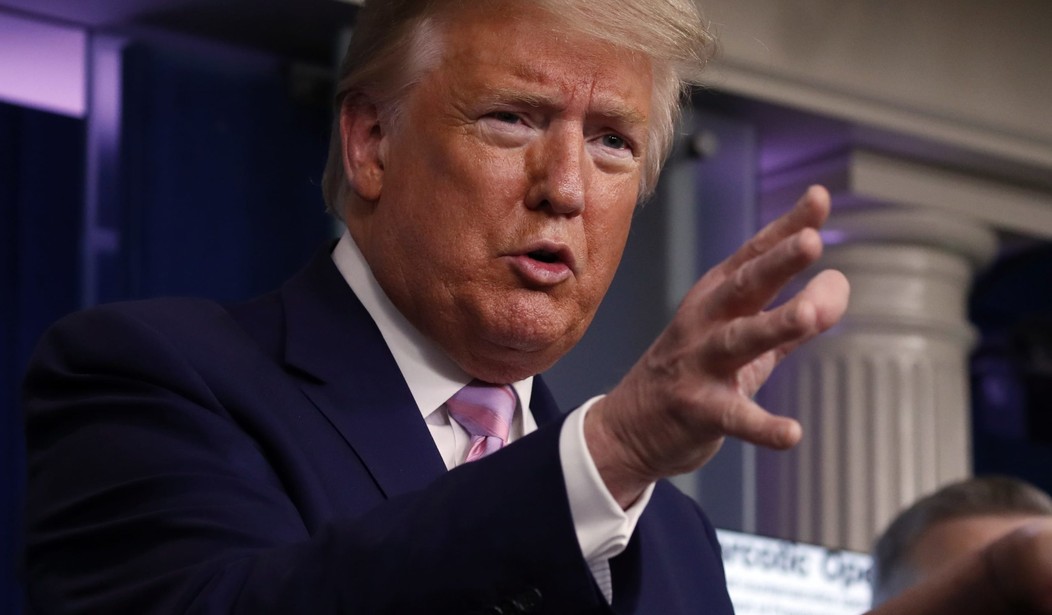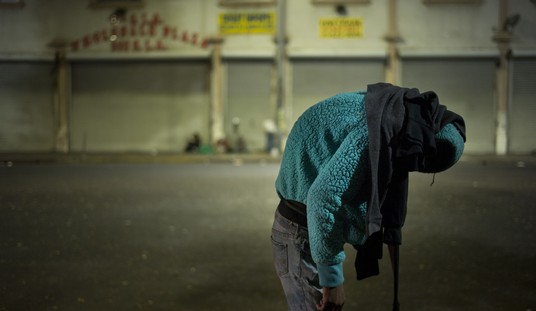Left-leaning media outlets who repeatedly demonize President Donald Trump and Fox News for minimizing the threat of the coronavirus might want to take a good hard look in the mirror.
Last week, The New York Times‘s Jeremy Peters recounted — in great detail — the many ways conservative figures like Sean Hannity, Rush Limbaugh, Candace Owens, Dennis Prager, and others compared the coronavirus to the regular flu and argued its spread should not be a cause for alarm. He faulted them for badly misleading their audience and encouraging Trump to delay a response.
Similarly, The Daily Show With Trevor Noah released a video montage called “Heroes of the Pandumbic,” which mocks those clueless conservatives who got the virus oh so wrong.
Hannity. Rush. Dobbs. Ingraham. Pirro. Nunes. Tammy. Geraldo. Doocy. Hegseth. Schlapp. Siegel. Watters. Dr. Drew. Henry. Ainsley. Gaetz. Inhofe. Pence. Kudlow. Conway. Trump.
Today, we salute the Heroes of the Pandumbic. pic.twitter.com/35WLDgoHcf
— The Daily Show (@TheDailyShow) April 3, 2020
Of course, it’s true that conservatives were slow to realize the danger of the coronavirus, and the right more or less turned on a dime when the threat became clear in mid-March. But both the Times and The Daily Show suggest this blindness was one-sided. On the contrary, not only did left-leaning news outlets also minimize the dangers but they also attacked Fox News’s Tucker Carlson and Sen. Tom Cotton (R-Ark.) when they took the threat seriously.
Cotton sent a letter to Health and Human Services Secretary Alex Azar way back on January 22, warning about China’s malfeasance and the danger of the coronavirus. He suggested the HHS take “measures such as screening all travelers from the People’s Republic of China and, if necessary, banning entry to those traveling from China.” On January 28, Cotton appeared on Tucker Carlson’s show to warn about the coronavirus. During that appearance, the senator said, “I suspect that months from now or perhaps even years from now when people look back at this time, coronavirus will be considered the bigger story than impeachment. I hope that’s wrong.”
Demonizing Fox News’s coverage of the coronavirus may put Americans at risk. As microbiologist and virus expert Dean Hart warned, “Fox News has a disproportionately older audience, which is the population most at-risk to suffer serious complications from COVID-19. … If Fox News is unjustly accused of spreading false information, this population may become more scared and confused.”
The accusation is unjust, as this timeline demonstrates. Here are a few examples of the many ways left-leaning media outlets minimized the threat of the coronavirus and twisted it to attack Trump.
1. “Too early” to declare a global health emergency
On January 23, NBC News reported the remarks of Didier Houssin, chair of the World Health Organization (WHO) emergency committee. The WHO repeatedly downplayed the threat to the rest of the world, even going so far as to cover for China and focus on stopping the spread of anti-Asian sentiment more than stopping the spread of the virus. Houssin insisted that “it’s too early to consider this event is a public health emergency of international concern.” This report does not show any bias on NBC’s part, but it does illustrate that experts were not concerned at the time.
2. “Don’t be too terribly concerned”
On January 24, NBC News’s medical correspondent Dr. John Torres told viewers, “Don’t be too terribly concerned” about the “Chinese coronavirus” in the U.S. He predicted that “you’re probably going to see a few more cases pop up” but he predicted the virus may drop off quickly as SARS did. Torres also said China was doing an excellent job taking precautions.
3. Worry about the flu
On January 29, the day after Cotton’s appearance on Tucker Carlson’s show, BuzzFeed News ran a story entitled, “Don’t worry bout the coronavirus. Worry about the flu.” BuzzFeed News updated the story on March 16, when it had become clear the coronavirus posed a different kind of danger than the flu.
4. Coronavirus won’t be a “deadly pandemic”
On January 31, Vox published a story predicting that the coronavirus would not be a “deadly pandemic.” The tweet linking to that story has been deleted, and it appears Vox is attempting to scrub the story from the internet. On February 6, Vox published another story telling readers they “shouldn’t panic” but also shouldn’t judge others for panicking.
5. Our brains make coronavirus scarier than it is.
Also on January 31, The Washington Post published a story from former Harvard professor David Ropeik entitled, “How our brains make coronavirus seem scarier than it is.” That article mostly focused on the “psychology behind our fear of the coronavirus,” but the author did claim that “the flu is a far more infectious and deadly disease, but it is familiar, which is, at it happens, one reason many have not had their flu shots this year.”
6. Flu is a greater threat
On February 1, The Washington Post published an article entitled, “Get a grippe, America. The flu is a much bigger threat than coronavirus, for now.”
Get a grippe, America. The flu is a much bigger threat than coronavirus, for now. https://t.co/71OsdttcXT
— The Washington Post (@washingtonpost) February 1, 2020
7. Travel bans are a mistake
On February 2, Johns Hopkins scholar Jennifer Nuzzo took to The Washington Post to argue against the U.S. ban on entry of foreign nationals who visited China in the previous 14 days. “Past epidemics prove fighting coronavirus with travel bans is a mistake,” the headline ran. Nuzzo cited WHO advice against travel bans, but a New York Times science reporter later acknowledged that Trump’s travel ban likely saved lives.
8. We should be wary of an aggressive government response
On February 2, The Washington Post ran an opinion piece by a pair of academics entitled, “Why we should be wary of an aggressive government response to coronavirus.” The academics warned that fears about the pandemic could “scapegoat marginalized populations.”
9. Travel ban could “backfire”
On February 4, Politico‘s Alice Miranda Ollstein wrote, “Coronavirus quarantine, travel ban could backfire, experts fear.” Ollstein argued that “the Trump administration’s quarantine and travel ban in response to the Wuhan coronavirus could undercut international efforts to fight the outbreak by antagonizing Chinese leaders, as well as stigmatizing people of Asian descent, according to a growing chorus of public health experts and lawmakers.”
Those Chinese leaders experts were so scared of antagonizing went on to blame the U.S. for the coronavirus that originated in China.
10. Who says it’s not safe to travel to China?
As late as February 5, The New York Times published an op-ed by global tourism reporter Rosie Spinks under the headline, “Who Says It’s Not Safe to Travel to China?” Spinks warned that the virus and the travel restrictions Trump put in place to respond to it were stoking hate against Chinese people and hurting the travel industry.
It is important to note that the first mention of the virus in the Times opinion section came on January 29, when the paper’s editorial board warned of the dangers to come and praised the Trump administration’s foresight. Given this positive step, however, the Spinks article seems even more egregious. Why did editors who were concerned about the virus approve such an article?
1-Kara did the .@nytimes give people like your mom bad advice?
2-In retrospect did President Trump make the right decision by implementing the “Travel Ban” 10 days after the first confirmed case in the USA?
.@karaswisher https://t.co/kHKjn1mclY— Sean Hannity (@seanhannity) April 2, 2020
11. CNN gives coronavirus 1.6 percent of its coverage
Between January 17 and February 5, CNN gave the coronavirus a paltry 12 minutes of airtime per day, about 1.6 percent of the network’s total coverage (after excluding ad time from the calculations), the Media Research Center reported. By contrast, ABC, CBS, and NBC spent two and a half minutes per evening newscast on the coronavirus during the same period — for 14 percent of all coverage, nearly eight times the rate of CNN. The pandemic was also the lead-off story in 33 percent of the big three network evening broadcasts, while it only led CNN’s coverage during four of CNN’s 360 hours of programming (just over 1 percent). At the time, CNN was obsessed with impeachment.
12. Flu is the real threat
On February 7, The Daily Beast tweeted, “Coronavirus, with zero American fatalities, is dominating the headlines, while flu is the real threat.” The article focused on which virus was killing more children.
Coronavirus, with zero American fatalities, is dominating headlines, while the flu is the real threat https://t.co/giKXaGvX0j
— The Daily Beast (@thedailybeast) February 8, 2020
13. Attacking Tom Cotton
On February 16, Cotton went on Fox Business and suggested that the coronavirus may have originated in the Wuhan lab. He did not suggest that it was manmade, but he did argue that the virus had to enter the food market before it left the food market.
New York Times columnist Jamelle Bouie slammed Cotton as “one of the most irresponsible and dangerous people in federal office.” The Washington Post responded with an article entitled, “Tom Cotton keeps repeating a coronavirus conspiracy theory that was already debunked.”
Yet on April 2, The Post‘s David Ignatius admitted that the origin story of the virus — that it “was spread by people who ate contaminated animals at the Huanan Seafood Market in Wuhan — is shaky.” Ignatius quoted microbiologist Richard Ebright as saying “the first human infection … could have occurred as a laboratory accident, with, for example, an accidental infection of a laboratory worker.”
As The Washington Examiner‘s Tim Carney pointed out, these media outlets owe Cotton an apology — not just on the potential origins of the virus, but for attacking him when he had beaten them to the punch in warning about the pandemic.
14. Fear spreads faster
On February 18, The New York Times‘s Megan Specia wrote an article entitled, “In Europe, Fear Spreads Faster Than The Coronavirus Itself.” Specia quoted WHO Director-General Tedros Adhanom Ghebreyesus, who warned that stigma against Asians might spread faster than the coronavirus. “The greatest enemy we face is not the virus itself; it’s the stigma that turns us against each other,” he said. Yes, the leader of the WHO said that.
15. Racism spreads faster
On February 21, CNN ran a story entitled, “What’s spreading faster than coronavirus in the US? Racist assaults and ignorant attacks against Asians.” To be clear, Chinese Americans have faced harassment at this time, and all Americans should condemn such attacks. However, the virus itself is clearly a far greater threat to the U.S. population as a whole than this injust stigmatization.
16. Omission
The journalists and moderators who hosted Democratic presidential debates (CNN, ABC, NBC, MSNBC, and more), as well as the Democratic candidates themselves, did not mention the coronavirus until the February 25 debate.
17. Comparing coronavirus to flu is “right”
On February 26, NBC News reported remarks by Ghebreyesus, the WHO leader, saying Trump is “right” to compare coronavirus prevention to the flu.
18. Trumpvirus
Yes, on February 26, America’s newspaper of record, The New York Times, published an op-ed by Gail Collins entitled “Let’s Call It Trumpvirus: If you’re feeling awful, you know who to blame.” Trump was right to complain about the politicization of the pandemic.
19. Trump-bashing
On February 27, between 6:00 a.m. and 11:59 p.m., CNN hosts asked 136 questions about the pandemic. A whopping 82 of those questions (60 percent) invited CNN guests — even medical specialists — to criticize the Trump administration’s handling of the pandemic, according to an MRC report. “Hosts often pressured guests who were reluctant to attack the administration.”
20. It isn’t that bad
On February 28, The Washington Post published an interview entitled “I have the coronavirus. So far it isn’t that bad.” The interviewer caught the virus on the Diamond Princess, the quarantined cruise ship.
21. “Be more concerned about the flu.”
On March 4, CNN’s Anderson Cooper told viewers to “be more concerned about the flu” than about coronavirus. The Washington Free Beacon compiled a montage of clips from left-leaning media outlets downplaying the virus.
22. Trump’s Katrina?
On March 8, CNN Editor-at-Large Chris Cillizza pondered whether the coronavirus crisis was Trump’s Hurricane Katrina. He faulted the president for “vilifying the media for reporting on facts about the virus because they contradict his preferred narrative. And on and on it goes.” Trump may attack the media unfairly from time to time, but this timeline shows not only the bias of left-leaning outlets but the fact that the very outlets condemning Trump for insisting on his “preferred narrative” had also been pushing that exact narrative.
23. Trump’s Chernobyl
It got worse, of course. While many commentators were noting that the Chinese Communist Party’s rush to silence China’s doctors amid the early days of the pandemic was reminiscent of the Chernobyl disaster, The Washington Post‘s Brian Klaas wrote an article claiming that the coronavirus is Trump‘s Chernobyl. On March 9, Klaas slammed Trump for “putting dangerous myths above objective facts,” when his own paper had published an article claiming the coronavirus “isn’t that bad” less than two weeks before.
On March 10, The New York Times‘s Bret Stephens also called coronavirus Trump’s Chernobyl.
Republicans and Democrats, conservatives and liberals all thought the coronavirus was less of a threat than it would turn out to be. Don’t buy the liberal propaganda that blames only Trump and Fox News when liberal media outlets were just as guilty.
Tyler O’Neil is the author of Making Hate Pay: The Corruption of the Southern Poverty Law Center. Follow him on Twitter at @Tyler2ONeil.









Join the conversation as a VIP Member